High Density Polyethylene (HDPE) is among the most widely used thermoplastics across diverse industries, from construction and agriculture to packaging and manufacturing. HDPE’s exceptional resistance to chemicals, moisture, and impact, combined with its versatility, makes it an ideal material for a vast array of applications. Given these critical properties, proper welding practices are paramount in maintaining safe, reliable, and long-lasting joints in any HDPE application. Understanding how to weld HDPE effectively, utilizing the correct HDPE welding equipment and techniques, is essential to create optimal welds that ensure structural integrity and performance.
What is High Density Polyethylene (HDPE)?
High Density Polyethylene (HDPE) is a thermoplastic polymer derived from petroleum. It is widely reputed for its high strength-to-density ratio, a crucial property that confers upon it the ability to withstand hostile conditions and heavy loads. HDPE is inherently tough, highly versatile, and exhibits excellent resistance to a wide range of chemicals, solvents, and moisture. Additionally, it is remarkably lightweight and possesses good elasticity, making it exceptionally suitable for applications in packaging, piping, and containers. Its superior durability and low permeability also adapt HDPE to environments where extreme conditions prevail, further supporting its extensive uses.
Why Weld HDPE? The Advantages of HDPE Plastic Welding
The ability to weld HDPE is a significant advantage that extends its utility across countless applications, allowing for the creation of seamless and long-lasting joints. Welding HDPE plastic offers numerous benefits, making it the preferred joining method for many HDPE products:
- Seamless and Leak-Proof Joints: Proper HDPE welding creates a monolithic bond, effectively turning two separate pieces into a single, continuous structure. This is especially critical for applications like HDPE pipe welding, where leak-proof connections are essential for fluid or gas transfer.
- High Strength and Durability: HDPE welds, when performed correctly, can be as strong as, or even stronger than, the parent material itself. This ensures the integrity and longevity of the joined HDPE components.
- Chemical and Corrosion Resistance: Unlike mechanical fasteners or adhesives, welding maintains HDPE’s inherent resistance to chemicals and corrosion across the joint, ensuring consistent performance in harsh environments.
- Cost-Effectiveness: Welding HDPE is often more cost-effective than alternative joining methods (like flanging or mechanical couplings) over the long term, reducing material waste and labor.
- Versatility: Various HDPE welding types (hot gas, extrusion, butt fusion) allow for joining different forms of HDPE, from thin films to thick pipes and sheets.
- Environmental Friendliness: Welding is a clean process that does not introduce foreign materials (like glues or solvents) that could compromise recyclability. The ability to weld HDPE also supports its reuse and repair, aligning with sustainable practices.
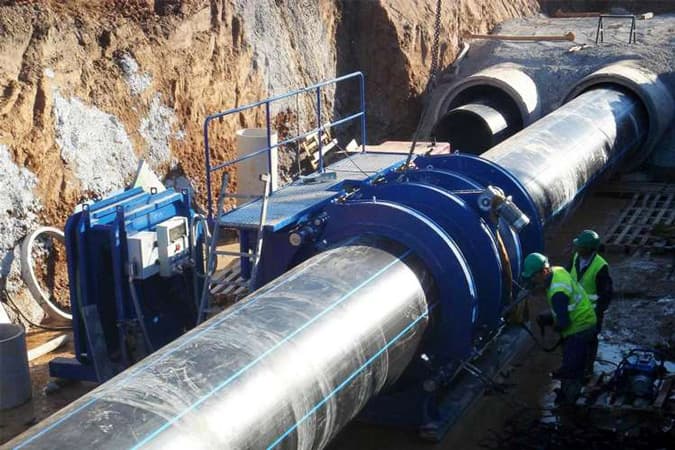
Whether utilizing an HDPE extrusion welder or a simple heat gun, welding is the answer to producing a long-lasting, consistent product for most uses in industry as well as around the home. The question “can you weld HDPE?” is definitively answered by the widespread success of these techniques.
Fundamental Principles of Thermoplastic Welding
The fundamental principle of thermoplastic welding is simple yet critical: you must weld like-plastic to like-plastic to create a quality, strong weld. Due to this reason, the substrate (the HDPE plastic being joined) and the weld rod (the filler material) ought to be of the same chemical composition for maximum outcome. For example, welding High-Density Polyethylene must be performed using HDPE welding rods and equipment specifically designed for HDPE. This ensures that the properties of the welding rod and base material are compatible, allowing the two to fully intermingle and form a strong, homogenous bond. Using chemically and structurally similar materials minimizes the chances of weak or brittle joints in the weld, resulting in a joint that is as strong and reliable as the original material.
There’s another prominent concept in polyethylene welding called density compatibility. When welding polyethylene, one must consider differences in materials’ densities. It is technically possible to weld HDPE sheets using LDPE welding rods (as LDPE melts at a lower temperature and is more pliable), but the reverse (using an HDPE rod on an LDPE substrate) would produce a poor fusion. HDPE is denser and has a higher molecular weight compared to LDPE, and hence it is more difficult to break down at the same speed under welding heat. Therefore, the material of lower density like LDPE is simpler to melt and mix with the material of higher density like HDPE. However, welding HDPE onto LDPE will generally produce a weaker, less effective weld due to the property mismatch. It is important to comprehend these density characteristics to achieve effective and durable thermoplastic welds. The best practice is always to match the HDPE grade of the weld rod to the HDPE grade of the parent material.
Key Methods for Welding HDPE: Detailed Techniques
High Density Polyethylene Welding is a process that requires skill and specific techniques, perfected through application over several decades. These techniques enable HDPE, an extremely elastic and strong thermoplastic, to be bonded successfully for many purposes. The most significant high density polyethylene welding processes applied across industries for applications from HDPE pipe welding to manufacturing small components are described below. These are the primary hdpe pipe welding types and hdpe sheet welding methods.
Hot Gas/Air Welding
Hot air or hot gas welding is perhaps the most widely used process for High Density Polyethylene Welding, particularly on smaller components, repairs, or fabrication of items like chemical tanks, water tanks, heat exchangers, and plumbing fittings. The process almost simulates metal welding in that it uses a specialized HDPE welder (often referred to as a heat gun or hot air welder) that produces a high-velocity jet of hot air or inert gas. This hot jet softens the HDPE substrate and the HDPE welding rod (which typically consists of the same or an analogous plastic material). The heat causes the plastic to become plasticized, upon which the weld rod is pressed into the softened base material, allowing them to melt and fuse together. The precision of welding HDPE with a heat gun permits the welder to address precise parts and perform clean, uniform welds.
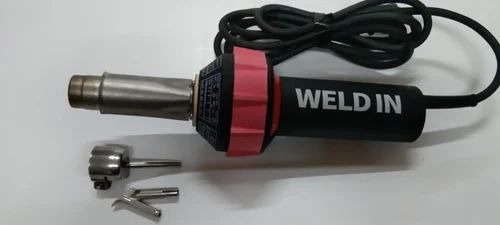
Hot gas welding is highly effective where precision and control of the temperature are critical. The temperature of High Density Polyethylene Welding must be properly controlled to prevent burning or degradation of the material. The heat gun and various nozzles, which come with HDPE welding kits, are used to supply hot air to the region that is to be welded. This method is a first choice for creating tough, resilient joints in small to medium-sized HDPE components.
Extrusion Welding HDPE (Especially for HDPE Pipe Welding)
Extrusion welding is a highly desirable method for joining thicker HDPE material, such as large-diameter pipes or heavy-duty industrial and construction parts greater than 6 mm (0.25 inches) thick. An HDPE extrusion welder is employed in this operation, which feeds an HDPE welding rod (or granules) into a handheld extruder. The rod is melted by the extruder’s heating elements, and the molten plastic is then forced out through a shoe, where it is deposited onto the joint. Simultaneously, a hot air jet from the extruder preheats and softens the HDPE parts to be joined, ensuring optimal fusion. The hdpe welding machines used in extrusion welding are designed to provide a steady, continuous supply of molten plastic to create a uniform and strong bond between the two HDPE pieces.
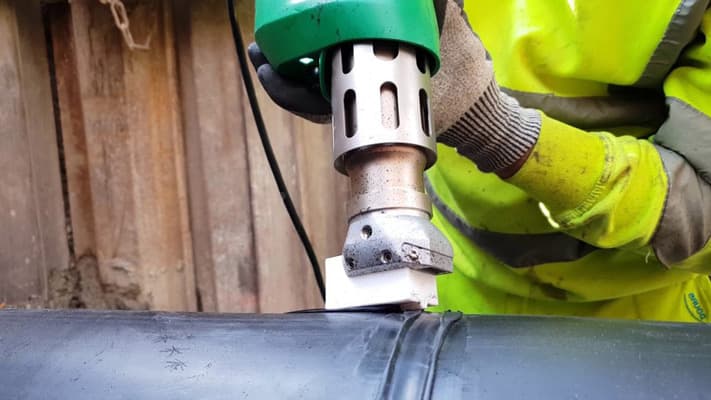
Speed tip welding is a faster and often more convenient technique that’s commonly used for welding smaller HDPE pieces, especially in confined or difficult-to-reach areas, or for quick repairs. This method utilizes a plastic welder that looks similar to a soldering iron but features a special feed tube that guides a continuous feed of the welding rod. The heated tip simultaneously heats both the rod and the HDPE substrate, allowing the softened rod to be pushed into position to unite the components. The rod is pressured into the joint by the welder, creating a good bond between the base material and the filler.
Speed Tip Welding
Speed tip welding is a faster technique that’s commonly used in welding smaller HDPE pieces, especially in confined or difficult-to-reach areas. They utilize a plastic welder that looks similar to a soldering iron except that it has a special feed tube providing a continuous feed of the welding rod. The speed tip heats both the rod and the substrate, allowing the liquid rod to be pushed into position to unite the components. The rod is pressured into the joint by the welder, creating a good bond between the base material and the filler.
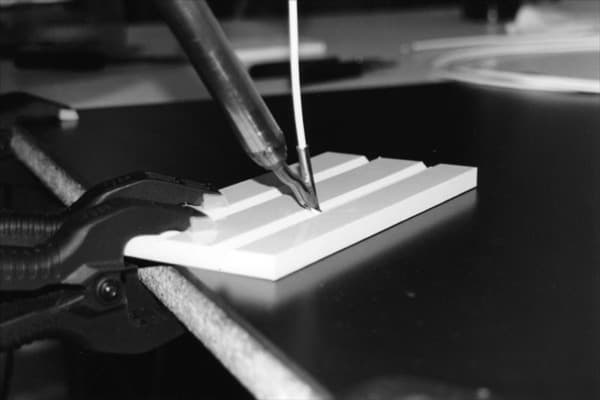
This technique is especially useful on small to medium-sized sections where precision and expediency are a must. In welding plastics like polypropylene or HDPE, the molten rod will at times need to be “blended” or worked into the semi-melted base material to achieve a smooth and uniform fusion. Speed tip welding is highly effective when welding in constricted areas or corners where other techniques might be less practical. Other variations of this technique might use a soldering iron with a flat tip, which works to heat the joint and filler material at the same time to achieve quick and precise results.
Butt Welding (for HDPE Pipe Welding and Sheets)
Butt welding, also known as butt fusion, is a widely used method for High Density Polyethylene Welding, particularly for joining HDPE pipes or large HDPE panels in a continuous, strong, and leak-proof manner. This process involves heating the ends of the two HDPE pieces to be joined to their molten state using a heated platen, and then pressing them together under controlled pressure to form a strong, homogenous bond.
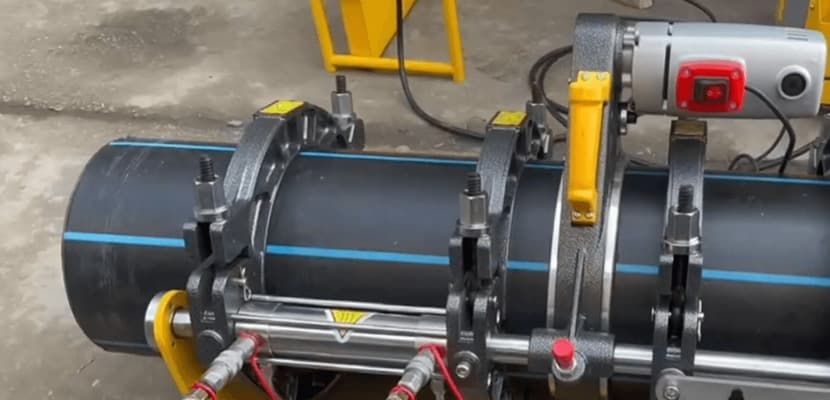
The method requires specialized HDPE welding machines (butt fusion machines) that precisely regulate temperature, pressure, and alignment during the welding process. The ends of the HDPE pipe or sheet are first planed flat and parallel. They are then brought into contact with a heated platen until a molten bead forms on each end. The platen is removed, and the two molten ends are immediately pressed together with a specific force, allowing the molten plastic to fuse and cool under pressure. The result is a very strong, often seamless, joint with excellent mechanical properties. Hence, butt welding is a popular method for heavy-duty HDPE processes like HDPE pipe welding in water, gas, and industrial applications.
Achieving Proper HDPE Welds: Essential Tips and Techniques
To create strong, firm, and consistent welds in High Density Polyethylene (HDPE), one must adhere to a series of imperative steps and best practices. These are crucial for ensuring the integrity of the weld, whether it’s hdpe sheet welding or hdpe pipe welding.
Preparation is Key for HDPE Sheet Welding Procedure
- Cleanliness: Start by thoroughly cleaning and degreasing every surface to be welded, including the HDPE welding rod, with a suitable solvent like isopropyl alcohol or MEK (Methyl Ethyl Ketone). Any contaminants (dirt, grease, dust) will act as bond breakers.
- Surface Preparation: For optimal fusion, prepare the edges of the HDPE substrate. This often involves grooving or chamfering the edges to create a “V” shape large enough for the weld rod to fill. Cutting the rod end at a 45° angle can also facilitate a secure bond. An automatic speed tip or specialized tools can make some of this preparation easier by allowing for consistent surface preparation.
Setting the Right HDPE Pipe Welding Parameters
All thermoplastics, including HDPE, have specific welding parameters that must be optimized according to the material grade, thickness, and ambient conditions to get the best results. These include temperature, pressure, and speed of welding.
Identifying the Correct HDPE Welding Temperature
Temperature Guidelines: For High Density Polyethylene Welding, the recommended temperature for the hot air (in hot gas welding) typically falls within the range of 300 – 320°C (572 – 608°F), with an airflow of approximately 40 – 50 liters per minute.However, these parameters can vary slightly depending on the specific HDPE grade, the thickness of the material, and the hdpe welding machines or hdpe welder being used.
Visual Cues for Proper Temperature: The ideal indication of correct HDPE welding temperature is the appearance of a quality weld.
- If the temperature is too high, the plastic will show signs of discoloration (browning or charring), burning, or excessive penetration (the weld rod sinking too deeply).
- If the temperature is too low, the weld will appear dull, lack proper fusion, be brittle, and break easily, or the rod will fail to penetrate and bond adequately with the substrate.
- A proper weld should have a dull, uniform finish on PE (or shiny on PVC), with a thin, consistent bead and about 0.5mm penetration into the base material for extrusion welding.
Applying the Weld
- Preheating: For hot gas welding, preheat the joint area and the weld rod simultaneously.
- Pressure and Angle: Hold the welder at the correct angle (typically 45-60 degrees) and apply firm, even pressure to drive the HDPE welding rod into the joint and seat it securely. Consistent pressure is crucial for good fusion.
- Technique: With some welding tips (e.g., speed tips), the rod will “pull through” once properly fused to the substrate, indicating a good bond. For extrusion welding, maintain a steady travel speed to ensure uniform molten plastic deposition.
Post-Welding Steps
After High Density Polyethylene Welding, proper finishing steps can enhance both the aesthetics and, in some cases, the performance of the weld:
- Finishing: The weld can be finished by sanding it to a smooth finish if desired. Start with a coarser grit sandpaper (e.g., 60-grit) to remove excess material, and progressively move to finer grits (e.g., 360-grit wet sandpaper) for a high polish. Most thermoplastics, including HDPE, can be sanded without significantly reducing weld strength.
- Restoring Sheen (Optional): To restore a shiny finish on polyethylene or polypropylene welds (as the welding process can dull the surface), lightly warm the welded area with a yellow open flame propane torch. Pass the flame quickly and evenly over the surface until it regains its sheen. Always exercise extreme fire safety precautions during this step to avoid burning the plastic.
Testing and Environmental Factors
Regular testing of HDPE welds is absolutely necessary, especially for critical applications or those in outdoor environments. Environmental conditions like ambient temperature and humidity can significantly affect the welding process and the quality of the final weld. Testing welds (e.g., destructive peel tests, visual inspection, non-destructive testing) guarantees quality consistency and helps in establishing optimal parameters for variable conditions, like adjusting HDPE welding temperature or pressure for different ambient conditions. This rigorous testing ensures that the “can hdpe be welded” question is answered with confidence in every project.
Commonly Welded HDPE Products
High Density Polyethylene Welding is a vital process utilized in a vast array of applications, demonstrating the versatility of HDPE:
- Piping Systems: The most common application, including HDPE pipe welding for water supply, gas distribution, sewage, and industrial fluid transfer.
- Geomembranes: Welding HDPE sheets for pond liners, landfill liners, and other containment systems.
- Tanks and Containers: Fabrication and repair of chemical storage tanks, water tanks, and large industrial containers.
- Agricultural Items: Repair of irrigation components, greenhouse structures, and large agricultural containers.
- Marine Applications: Fabrication and repair of boat hulls, docks, and other marine structures.
- Construction: Joining HDPE sheets for vapor barriers, foundation protection, and specialized architectural elements.
- Signage and Displays: Welding HDPE for durable outdoor signs, billboards, and banners.
- Automotive: Repair of certain HDPE automotive components.
- Custom Fabrication: Creating custom HDPE products for various industrial or consumer needs.
Conclusion
Understanding HDPE properties and the High density polyethylene welding process is the key to achieving strong, reliable, and durable welds. The ability to weld HDPE effectively opens up a vast array of possibilities for fabrication, repair, and construction across numerous industries. Proper handling of hdpe welding equipment (such as an hdpe welder, heat gun, or hdpe extrusion welder) and diligent practice are essential requirements for mastering welding procedures and exerting the right amount of temperature and pressure.
Whether you’re performing hdpe sheet welding, hdpe pipe welding, or any other form of hdpe plastic welding, always prioritize surface preparation, correct hdpe welding temperature, and adherence to established hdpe pipe welding parameters. For more specific tips, consult local plastics suppliers or industry standards to ensure high-quality results. The answer to “can hdpe be welded?” is a resounding yes, provided the right techniques and knowledge are applied.


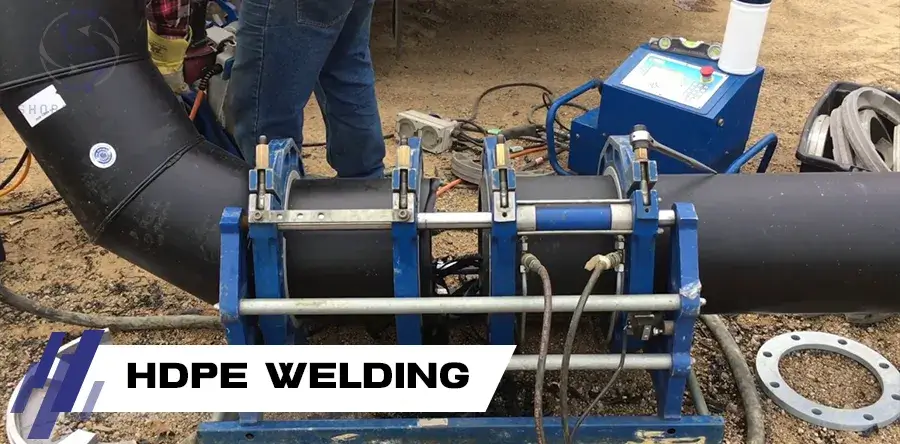

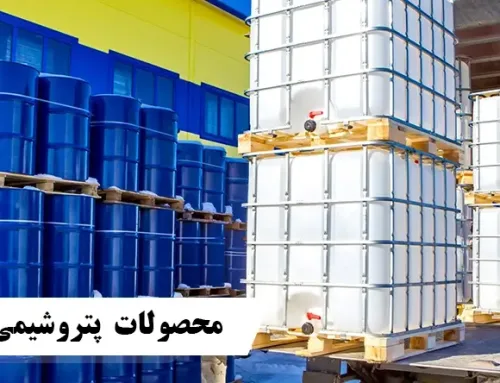
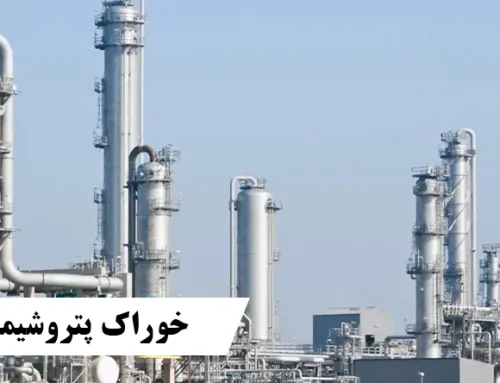
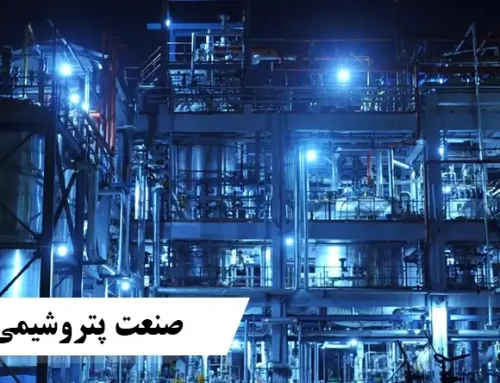
درج دیدگاه